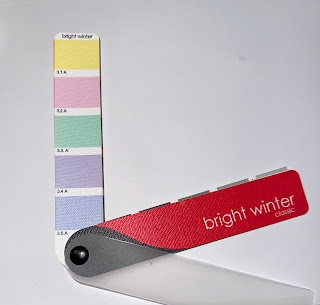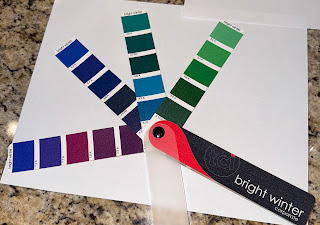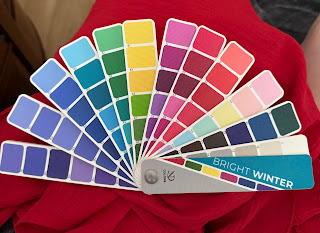If you have difficulty accepting being draped into a seasonal category because you don’t look like the stereotype, I understand how you feel. As a dark blonde Bright Winter, I’ve lived it. Here’s a list of what we’ve all read and heard from color analysis systems:
Winters are brunette.
Autumns have warm hair.
Summers are soft and blended in their coloring.
Most Springs are blonde or have shiny red hair.
If your hair is mousy (can we STOP with that descriptor?) you are Summer.
Tan skin always means Autumn.
I can add a whole lot more to this list.
You can end up going home and doubt the results, especially if you do a search on Pinterest and start examining your seasonal category. There is a chance that, yes….you DO fit the “typical”. But-what if you don’t? What if you are a red headed Light Summer or a brunette Soft Autumn? Should you question the results?
First, push that thought aside. It can cause unnecessary confusion.
Here’s how to start out.
Look at the 12blueprints or Sci/ART consultants pages and pay attention to client photos. You will discover a plethora of people who don’t fit into any stereotype that are in seasonal categories no one would imagine. Hopefully, this will help you feel more settled.
Then, take a deep breath. Look at your color palette and choose 3 shade ranges you like. (E.g., you like the purples, pinks and blues.) I recommend purchasing 3 t shirts in solid colors and two lipsticks, preferably in the mid range of your palette, because that shade range is flattering for anyone in your seasonal home. See how you feel, and wait for the compliments that have nothing to do with the garment or cosmetics themselves. You can be sure, at that point, you are on the right track.
With a correctly done draping session, especially during the final steps, you will see how your hair, skin tone and eyes work together. One feature should never be isolated. A color palette that looks great with your hair or your eyes might not do your skin tone any favors. If your skin looks at its luminous best, then everything else will fall into place as a whole picture. This is one reason why hair is covered. It minimizes distractions and places focus on the most important thing-skin reaction.
One really interesting fact I learned from Christine Scaman: you can put together two people, side by side with the same outward appearance, and one person will have relatively brighter eyes and more richly colored hair than the other. One could appear lighter, the other slightly darker or warmer. These people appear the same in coloration, but are in completely different seasonal categories.
I’ll share much more I’ve learned from Christine’s book “Return to Your Natural Colors.” Until then, don’t stress and be open minded in giving your palette a try.
Sincerely,
Tina

























